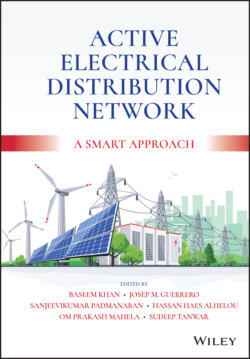Читать книгу Active Electrical Distribution Network - Группа авторов - Страница 38
1.5 Conclusion
ОглавлениеThe present study applies the business model concept to investigate how different models of power distribution fit themselves to be suitable for the requirements of a smart grid. Different business models have evolved across the globe to analyze the power distribution function. Based on the analysis, related concerns with a particular model have been sorted. A surprising result is that most of the adopted models are not suitable to accommodate the undergoing changes that are taking place as a result of smart grid implementations.
A clear result shows that it is necessary for the distribution utilities to strengthen their business model innovation capabilities to cope with the growing challenges. If a utility fails to adapt a suitable business model, it becomes difficult for the utility to transition from a traditional grid to a smart grid. Therefore, it becomes an inevitable task for the distribution utilities to innovate and adapt a suitable business model that ensures adequate infrastructural development in terms of basic electrical infrastructure, metering infrastructure, communication infrastructure, and IT infrastructure. Apart from this, an organization structure is also needed for management and maintenance works as well as control and operation-related tasks. Creating a mindset open to business model innovation could help utilities to overcome the various challenges under a smart grid environment. The research also has some implications for policy makers, regulators, and energy consultants.
The new business model is expected to overcome all the different challenges (as discussed in previous sections) faced by presently widely accepted and planned business models. Apart from this, separation of different activities into distinct businesses will lead to the following benefits:
Create an opportunity for all different small players who are sound in technology related to the power business.
Will ensure a competitive environment across various stages of power distribution.
Will create huge job opportunities.
Open a new business in the field of education and training.
Tariff rates will be reduced.
Ensure improved power quality.
Ensure system stability and reliability.
Not only big players but also other small players will get a chance to participate in business.
Will attract many other expertise companies like IT, communication, insurance, trading, BPOs, etc., toward the power business.
BPOs are paying huge salaries to employees and people because of their ideas. Thus, by attracting BPOs for participation in the distribution sector, intelligent people are being accommodated in the sector.
It will help in promoting renewable-based distributed generations.
Promote the needs and importance of the micro grid.
Will bring down the level of AT&C loss within acceptable limits.
Attract attention toward loss reduction apart from operation and maintenance.
Create motivation for DSM-related activities.
Automatic realization of ABR.
This model suits both urban and rural areas in the context that some models are not suited for rural implementation.
